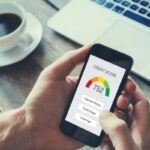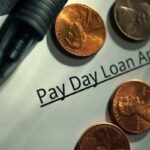If you’ve ever had the weight of student loans hanging over your head, you’re not alone. Millions of Americans are in the same boat, wondering if they’ll ever see the light at the end of the tunnel. But what if there was a way to ease that burden, maybe even erase it altogether? That’s where student loan forgiveness comes into play. This article dives deep into the ins and outs of student loan forgiveness, unraveling the complexities, so you can see if it’s the lifeline you’ve been waiting for.
What Is Student Loan Forgiveness?
Student loan forgiveness refers to a program or policy that allows borrowers to have part or all of their student loans canceled or forgiven, meaning you no longer have to repay that portion of the debt. Sounds like a dream come true, right? But, like most things in life, it’s not that simple. There are specific requirements, rules, and timelines you need to follow to qualify for student loan forgiveness.
Types of Student Loan Forgiveness Programs
There are several student loan forgiveness programs available, each tailored to different types of borrowers and careers. Here’s a breakdown:
- Public Service Loan Forgiveness (PSLF): This program is designed for those who work in public service jobs, including government positions, non-profit organizations, and some types of healthcare. After making 120 qualifying payments, the remaining balance on your loan could be forgiven.
- Teacher Loan Forgiveness: If you’re a teacher working in a low-income school or educational service agency, you might qualify for forgiveness of up to $17,500 on your Direct Loan or FFEL Program loans after five consecutive years of teaching.
- Income-Driven Repayment (IDR) Forgiveness: Under an IDR plan, your monthly payments are based on your income and family size. After 20 to 25 years of qualifying payments, any remaining balance could be forgiven.
- Perkins Loan Cancellation and Discharge: Teachers, nurses, military personnel, and other public service employees with Perkins Loans may be eligible for partial or full cancellation of their loans.
How Does Student Loan Forgiveness Work?
Student loan forgiveness isn’t automatic; you have to meet specific criteria and follow the correct process. Here’s how it typically works:
- Qualifying Payments: For most forgiveness programs, you need to make a certain number of qualifying payments. These payments must be on time, the full amount due, and under a qualifying repayment plan.
- Qualifying Employment: Many forgiveness programs require you to work in a specific field or for a qualifying employer. For example, PSLF requires that you work full-time for a government or non-profit organization.
- Application Process: Forgiveness isn’t granted automatically—you have to apply for it. This typically involves submitting proof of your qualifying payments and employment.
- Remaining Balance Forgiveness: If you meet all the requirements, the remaining balance on your loans is forgiven, meaning you’re no longer required to make payments on that portion of the debt.
The Pros and Cons of Student Loan Forgiveness
While student loan forgiveness can be a financial lifesaver, it’s not without its drawbacks. Here’s a quick look at the pros and cons:
Pros:
- Financial Relief: The most obvious benefit is the potential to have a significant portion of your student loan debt erased.
- Incentive for Public Service: Programs like PSLF encourage careers in public service by offering loan forgiveness as a reward.
- Affordable Payments: Income-driven repayment plans can make monthly payments more manageable, with the promise of forgiveness after a set period.
Cons:
- Strict Qualifications: Many forgiveness programs have stringent requirements that can be difficult to meet.
- Long Commitment: Programs like PSLF require 10 years of qualifying payments, which can feel like a long time.
- Uncertainty: Changes in government policies can impact forgiveness programs, leading to uncertainty about whether you’ll receive forgiveness.
Common Myths About Student Loan Forgiveness
There’s a lot of misinformation out there about student loan forgiveness. Let’s clear up some of the most common myths:
- Myth: Everyone Qualifies for Student Loan Forgiveness
- Reality: Not everyone qualifies. Most programs have specific criteria that you must meet, including employment type, loan type, and repayment plan.
- Myth: Student Loan Forgiveness Is Automatic
- Reality: You have to apply for forgiveness and provide documentation proving your eligibility.
- Myth: Forgiven Loans Aren’t Taxable
- Reality: In many cases, forgiven loan amounts are considered taxable income, meaning you could face a hefty tax bill.
- Myth: Private Loans Can Be Forgiven
- Reality: Most student loan forgiveness programs apply only to federal loans, not private loans.
FAQs About Student Loan Forgiveness
- Who qualifies for student loan forgiveness?
- Generally, borrowers who work in public service, teach in low-income schools, or are on an income-driven repayment plan may qualify.
- How long does it take to get student loan forgiveness?
- It depends on the program. For example, PSLF requires 120 qualifying payments, while IDR forgiveness can take 20-25 years.
- Is student loan forgiveness taxable?
- In many cases, yes. Forgiven amounts can be considered taxable income.
- Can I get student loan forgiveness if I have private loans?
- Most forgiveness programs are for federal loans only. However, some private lenders may offer discharge options in extreme circumstances, like disability.
- How do I apply for student loan forgiveness?
- You’ll need to submit an application through your loan servicer or the U.S. Department of Education, depending on the program.
Conclusion
Student loan forgiveness can be a game-changer for those struggling under the weight of student debt. Whether you’re working in public service, teaching, or simply managing your payments under an income-driven repayment plan, there may be a light at the end of the tunnel. However, it’s crucial to understand the rules, follow the process, and stay informed about any changes in policy. With the right approach, student loan forgiveness might just be the key to unlocking a debt-free future.
Authoritative Links
- Federal Student Aid: https://studentaid.gov
- U.S. Department of Education: https://www.ed.gov
- Public Service Loan Forgiveness (PSLF) Program: https://studentaid.gov/manage-loans/forgiveness-cancellation/public-service
- Teacher Loan Forgiveness: https://studentaid.gov/manage-loans/forgiveness-cancellation/teacher
- Income-Driven Repayment (IDR) Plans: https://studentaid.gov/manage-loans/repayment/plans/income-driven
- National Consumer Law Center: https://www.nclc.org







